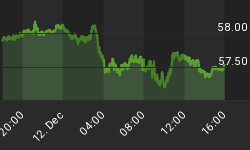
2011 - Déjà vu All Over Again?
In 2011, stocks moved sideways for several months as questions about the sustainability of the eurozone dominated the news. The front page of the financial section in 2011 was also littered with stories about unsustainable debt in Greece. It all sounds familiar in 2015. Stocks eventually plunged in late July/early August 2011 and did not find a bottom until early October.

Below is a list of some of the noteworthy events in 2011. From BBC News:
April 2011: Portugal admits it cannot deal with its finances itself and asks the EU for help.
May 2011: The eurozone and the IMF approve a 78bn-euro bailout for Portugal.
June 2011: Eurozone ministers say Greece must impose new austerity measures before it gets the next tranche of its loan, without which the country will probably default on its enormous debts. Talk abounds that Greece will be forced to become the first country to leave the eurozone.
July 2011: A second bailout for Greece is agreed.
August 2011: European Commission President Jose Manuel Barroso warns that the sovereign debt crisis is spreading beyond the periphery of the eurozone.
2011: Defensive Assets Are In Demand
The chart below shows the performance of defensive-oriented Treasuries (TLT) relative to growth-oriented stocks (SPY) in 2011. Bonds started saying "be careful with stocks" in February 2011 or five months before the July/August waterfall decline in stock prices (see point A below).

How Does The Same Chart Look Today?
Rather than making bearish new highs, the TLT vs. SPY ratio recently made a lower low (see point B in chart below).

How About The Long-Term Outlook?
Investors are human, and thus, we all have to fight the negative influence of recency bias. For example, many believe the next fifteen years in stocks will be marked by the same "bull market followed by a crash" pattern that we have seen over the last fifteen years. Another common set of beliefs: "bonds have done well over the past thirty years, bonds will continue to do well, and everyone should own them". What do the last 100 years of market history tell us about stocks, bonds, and recency bias? The answers, which may surprise you, are in this week's stock market video.
Video: Stocks Could Surprise Significantly In Next 15 Years
Small Caps vs. Bonds
In 2011 as fear about bad things happening increased, the demand for growth-oriented small cap stocks (IWM) began to wane significantly relative to defensive-oriented Treasuries (TLT).

How Does The Same Chart Look Today?
Instead of making a bearish series of lower highs and lower lows as it did beginning in February 2011, the 2015 IWM to TLT ratio recently broke above a bullish inverse head-and-shoulders neckline and has been making a series of bullish higher highs and higher lows.

Confidence Was Waning In 2011
The slopes of the S&P 500's 50-day and 200-day moving averages began to roll over in a bearish manner in 2011, which provided some additional "be more careful" signals before stocks starting falling hard in late July.

How Does The Same Chart Look Today?
Anything can happen in the markets at anytime. Having said that, the 2015 risk-reward profile in the stock market is more favorable than the profile in late July 2011 (compare 2011 chart above to 2015 chart below).

Investment Implications - The Weight Of The Evidence
Greece remains a wild card that needs to be respected from a risk management perspective. Given the facts we have in hand, our market model remains in "heavy equity" mode.
Our concerns would increase and defensive action would most likely be required if the S&P 500 closes below 2,039 at the end of the week. A small incremental change may be required with a weekly close below 2,055. The situation in Greece has many moving parts. We also have a Fed statement and press conference Wednesday. As always, the hard data and market will guide us through this volatile period if we observe with a flexible, unbiased, and open mind.
















